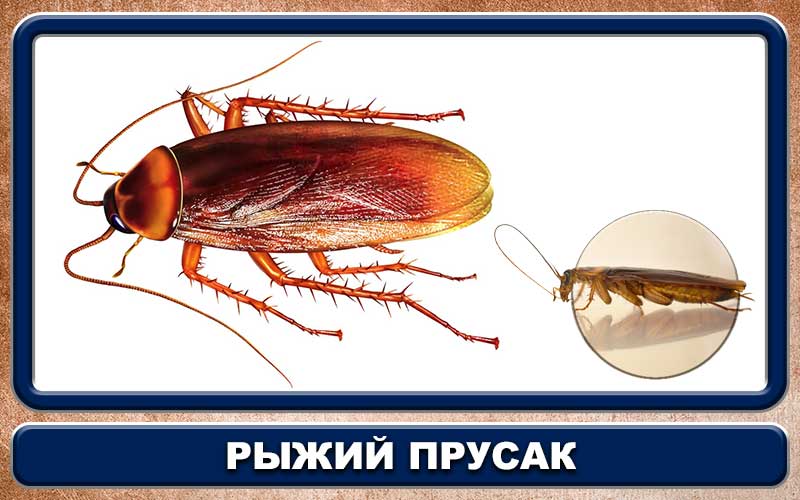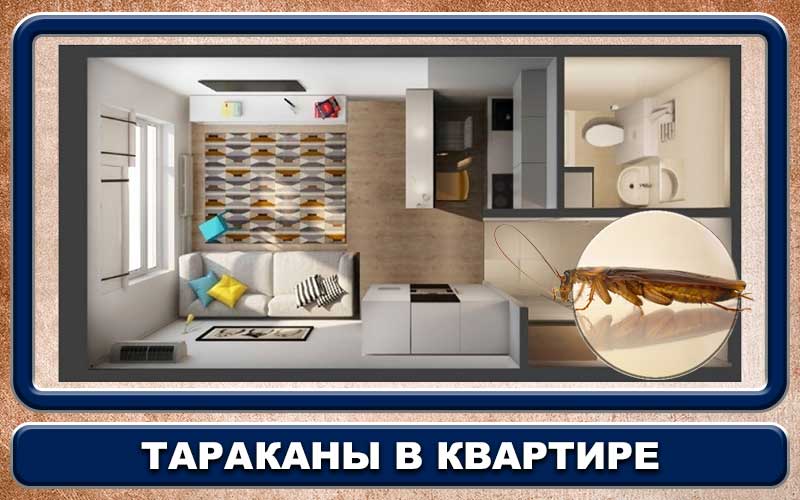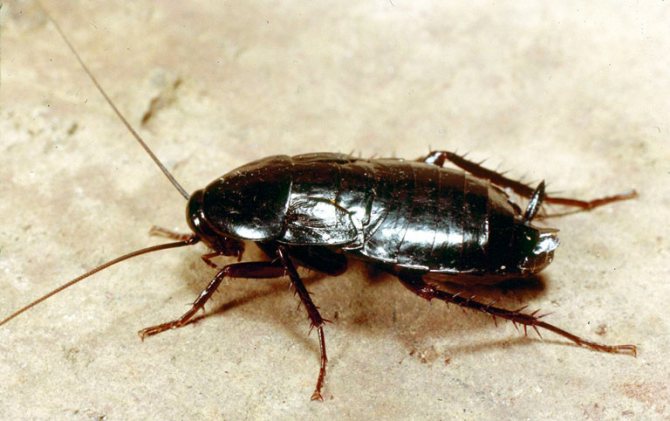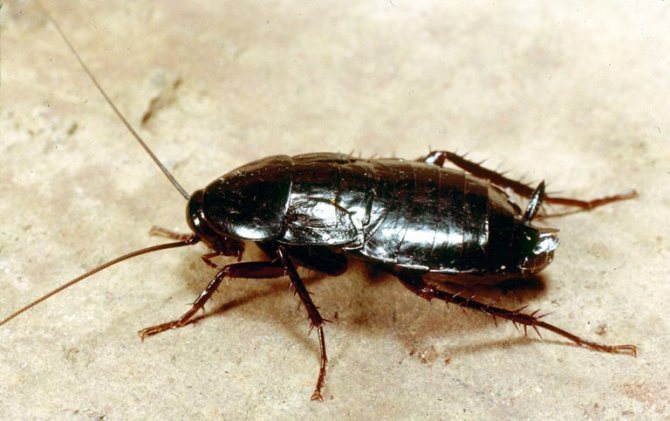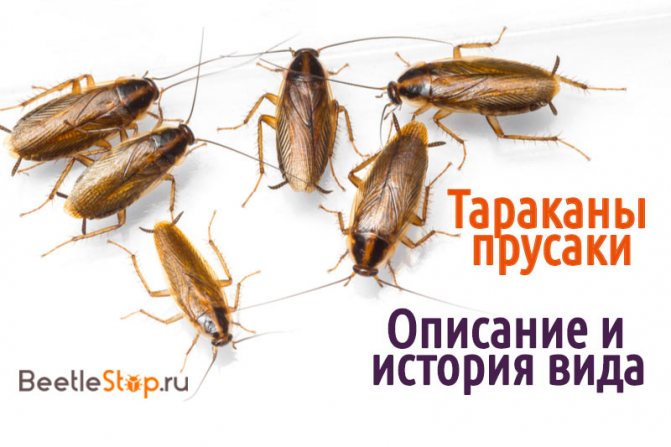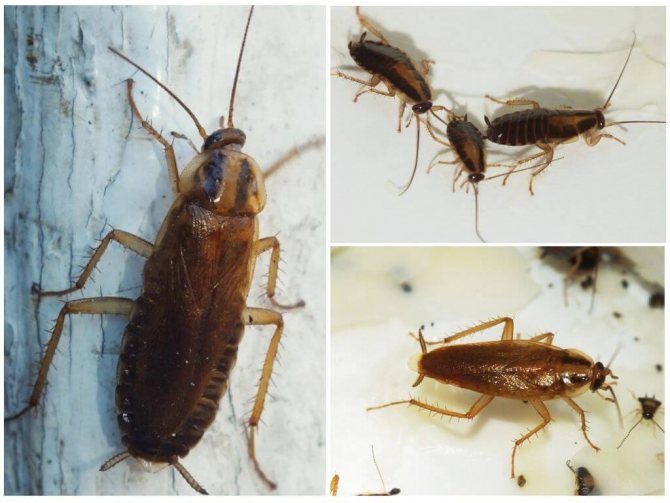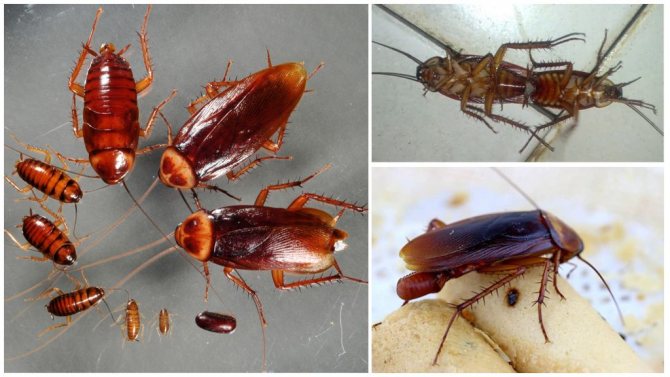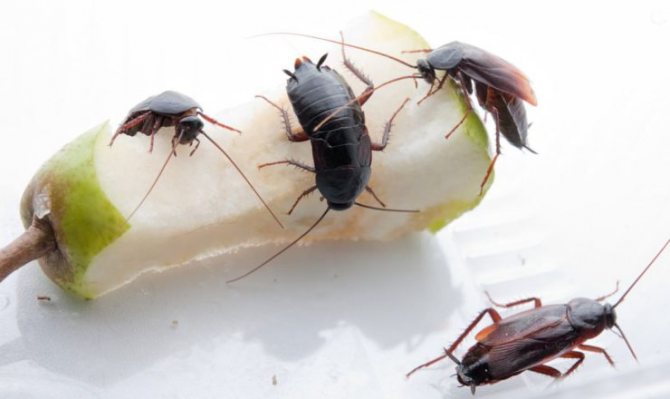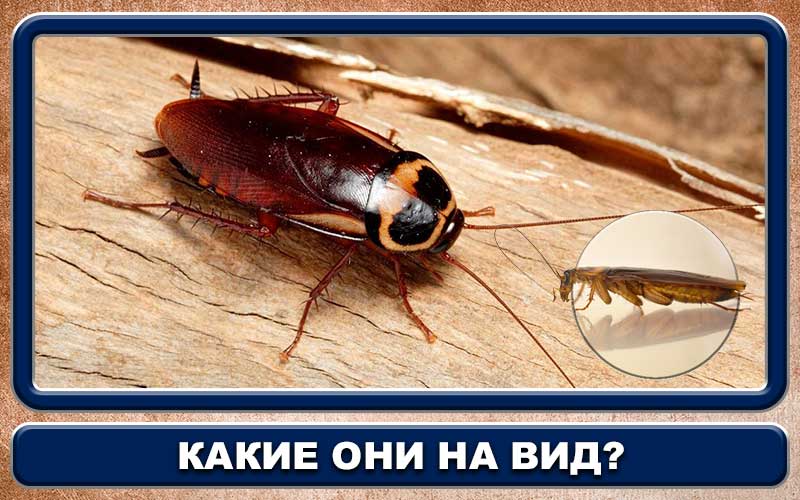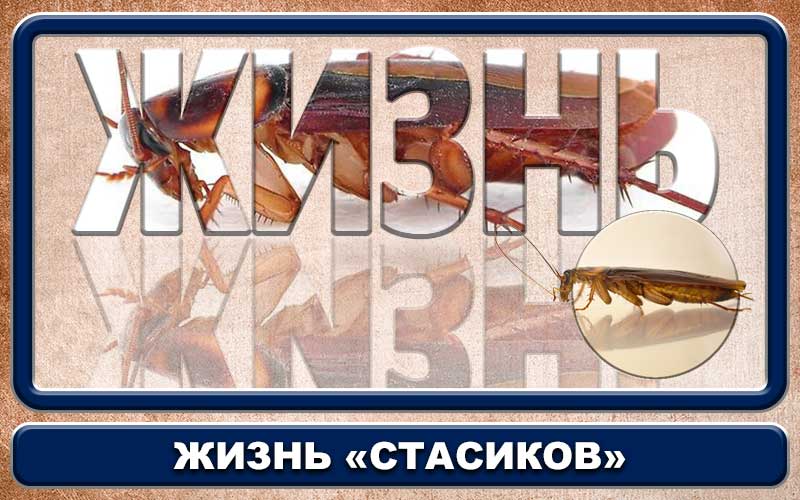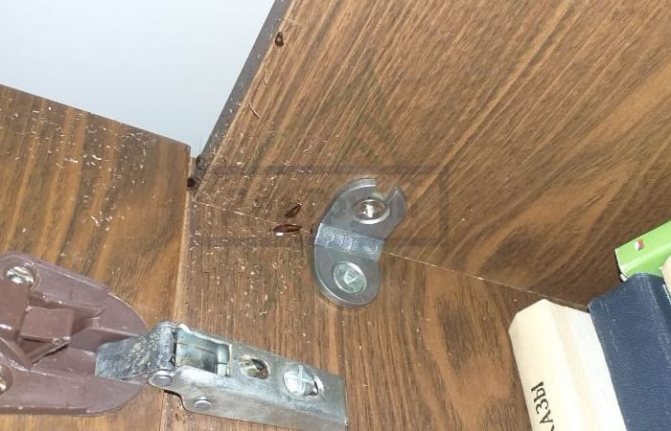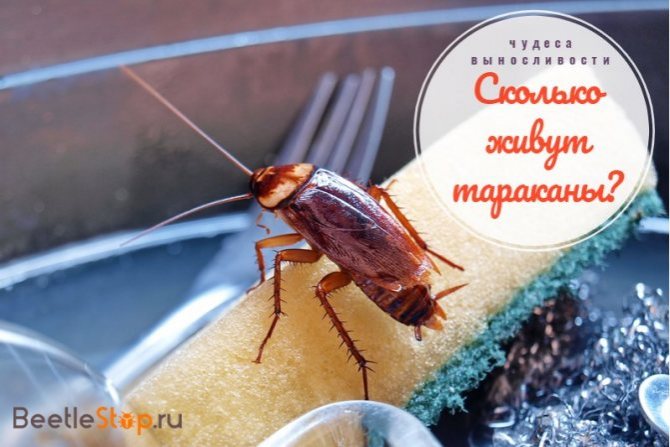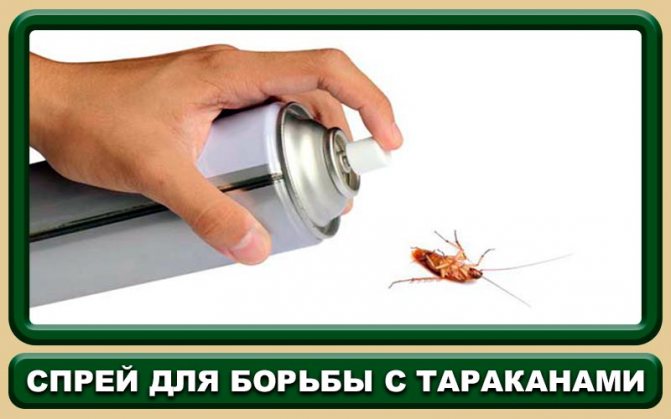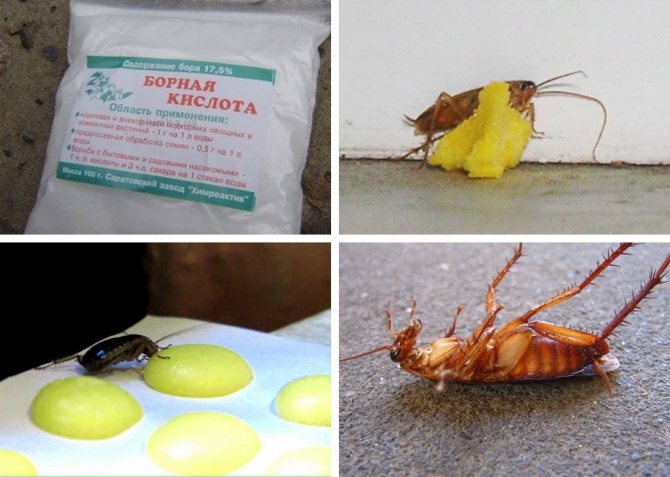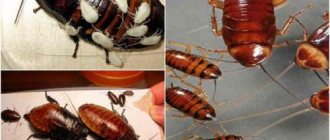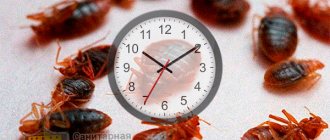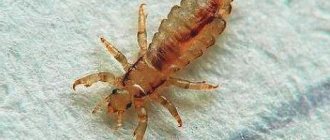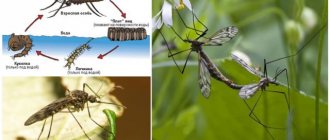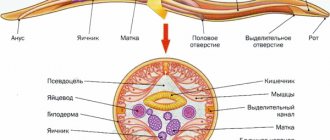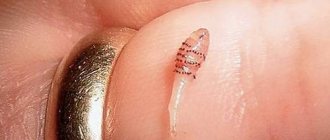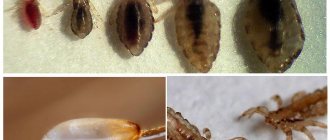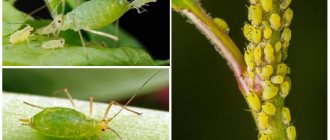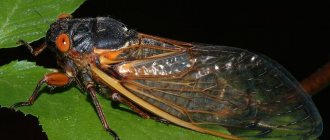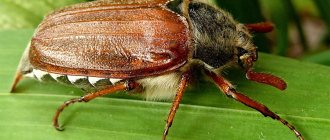- Wild animals
- >>
- Insects
Red cockroach - a bosom enemy of housewives, a night defiler of kitchens and bathrooms. This insect of childhood, our unauthorized lodger, travel companion, hotel roommate and cellmate in the office. They have been trying to lime him for centuries, and he just as stubbornly resists, changing tastes and susceptibility to poisons. This is a universal soldier of nature, guarding its fundamental law - survival at any cost.
Origin of the species and description
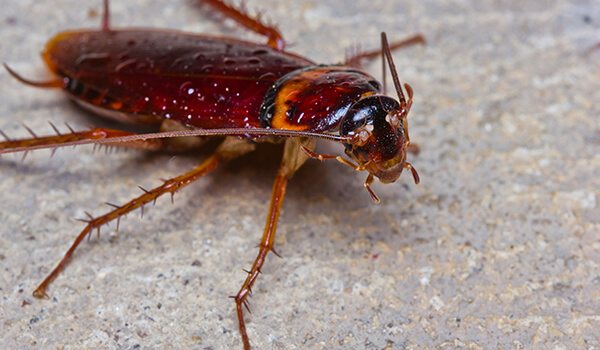
Photo: Red cockroach
The red cockroach, also known as the Prusak (Blattella germanica), belongs to the Ectobiidae family. It was described by Karl Linnaeus in the "System of Nature" in 1767. The name of the genus comes from the Latin word "blatta", which the Romans called insects that are afraid of light.
Ectobiids, or tree cockroaches, are the largest cockroach family, in which about half of all cockroaches from the Blattodea order. But besides the Prusak, among them there will be no more than 5 pests like him occupying people's homes. The most famous of them are black and American. The rest prefer a free life in nature.
Video: Red cockroach
In the structure of cockroaches, primitive signs characteristic of ancient insects can be traced: chewing jaws, poorly developed flying muscles. The time of their appearance, judging by the reliable prints, dates back to the beginning of the Carboniferous (about 320 million years ago). Phylogenetic analysis shows that cockroaches arose earlier - at least in the Jurassic period.
Interesting fact: National antipathies are reflected in the popular names of an unpleasant insect. In Russia, this type of cockroach is called "Prusak", since it was believed that it was imported from Prussia. And in Germany and the Czech Republic, once part of Prussia, he is called "Russian" for a similar reason. In fact, it is not known where he appeared earlier. The paths of historical migrations of the red beast have not been studied.
Prusak nutrition
The mouth apparatus of all gnawing cockroaches. The floor of the mouth protrudes and acts as a tongue. Prusaks are omnivorous, eat a variety of fresh and spoiled foods, preferring moist ones. In their absence, they eat paper, fabrics, leather products, and houseplants. They can nibble on the plastic insulation of electrical wiring, soap. Bacteria living in the digestive tract help insects digest solids.
Cockroaches enter bedrooms, where they feed on particles of the human epidermis. Lick sweat and tears from sleeping people. It is the presence of available products or their leftovers that attracts the Prussians to a new room.
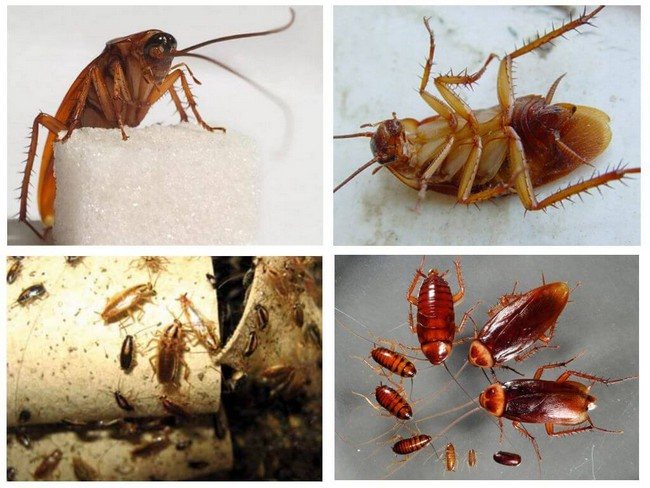

Adult cockroaches do without food for 2-3 weeks, larvae take longer. They can live no more than three days without water. Therefore, by limiting access to moisture, it is possible to significantly reduce the size of the Prusak population.
Appearance and features
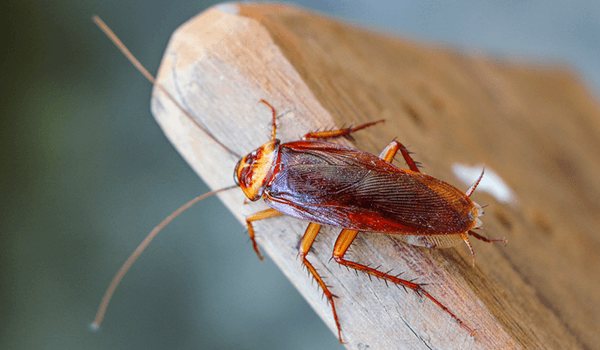

Photo: What a red cockroach looks like
Cockroaches belong to insects with an incomplete transformation cycle and go through three stages as they develop: an egg, a larva (nymph) and an adult (imago), and the larva differs little from the last stage. The larva hatches from the egg after 14 - 35 days and passes from 6 to 7 molts, each time increasing in size until it reaches the size of an adult cockroach.This process takes 6 to 31 weeks. An adult male lives 100 to 150 days. The female's lifespan is 190-200 days. The cockroach is agile, nosy, elusive and disgusting, especially at the last stage.
Adult Prussians are 12.7 - 15.88 cm long and weigh from 0.1 to 0.12 g. The general color is light brown, two wide dark stripes run along the dorsal side of the prothorax. The chitinous varnish is thin and the body is soft, which increases the aversion to this insect. The shape of the body is streamlined, oval, flattened and adapted to slip into any crevices.
The thoracic segments smoothly pass into the segmented abdomen, which is covered with paired soft wings. When frightened, the cockroach spreads its wings, but is only able to use them for planning, for example, from a table to the floor. The spiked legs are long and strong - the legs of a real runner. The neat flattened head is adorned with flexible thin mustaches, which the Prusak guards cautiously around, trying to catch danger.
Males are slender and narrower than females, the narrowed end of the abdomen protrudes from under the wings and is equipped with two protruding setae - cerci. In females, the end of the abdomen is rounded, usually carries eggs in a special package - ooteca. Larvae - nymphs are smaller, but of the same shape. The coloration is darker, the stripe is one and the wings are underdeveloped. The eggs are round, light brown.
Structure
The body of the cockroach was covered with a dense chitinous membrane (black or dark brown with a sheen), which protects it from damage and attacks from larger insectivorous predators. This carapace is much stronger than that of the red-headed congeners.
It is extremely rare to find a white cockroach, it is not an albino (as many assume). During their long life, adults molt up to 6 times, shedding their shell. After molting, the cockroach remains white, but within 4-6 hours it darkens and restores its previous color.
Like all members of the family, the structure of the black cockroach has its own characteristics, namely:
- The size of adult insects can reach a length of 3 cm.However, in nature there are especially large cockroaches with a body length of 5 cm.
- On the back of this species there are wings that perform different functions in representatives of different sexes (males have longer pronounced wings and use them for flight, while females use them to lure males during the breeding season).
- On the head of cockroaches there are highly sensitive antennae that are responsible for the sense of smell. With their help, insects find water, food and relatives for mating. If this organ is lost or damaged, the insect may die.
- The present pair of eyes has a faceted structure, however, it has been noticed that vision is better in males than in females.
- The trunk consists of 10 segments and ends with reduced organs called cerci.
- Respiratory organs (stigmas) are located on the abdomen of insects. This structural feature allows even a decapitated cockroach to remain viable for several days.
- A characteristic feature of black cockroaches are short legs, which affects their running speed (in comparison with the Prussians, they run noticeably slower, and often jump off in case of danger).
- All three pairs of legs have claws and Velcro to allow movement over vertical uneven surfaces and fabric curtains. Usually, adults do not climb smooth vertical walls, as they are quite heavy and often fall. Young individuals can conquer any peaks.
This species has a pronounced sexual dimorphism, visible to the naked eye (especially if you look at the black cockroach in the photo or live):
| Organs | Female | Male |
| Torso | dense, wide, up to 3-5 cm | oblong, narrow, 3-5 cm |
| Wings | short, not reaching the abdomen | cover most of the abdomen |
| Abdomen | wide and markedly segmented | narrow |
| Antennae | short | the length exceeds the size of the body, which makes it possible to use them in the fight for the female |
Features of the internal structure:
- The brain of a black cockroach is a nerve node from which processes extend throughout the body.
- The heart has several chambers.
- In the mouth apparatus of the gnawing type, there are glands that secrete enzymes when eating food to speed up digestion.
- The digestive system is equipped with powerful chitinous valves and bacteria that can digest paper, soap, hair, and natural skin.
Where does the red cockroach live?
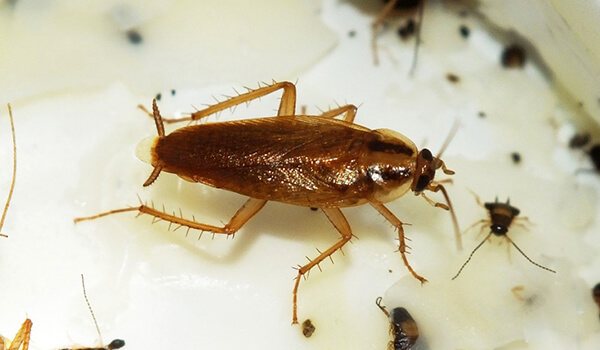

Photo: Domestic red cockroach
South Asia is the recognized homeland of the Prussians. Their mass distribution begins in the 18th century - the era of round-the-world travel, scientific expeditions and colonial trade. Now red cockroaches have dispersed all over the world and settled in all suitable habitats, not embarrassed by the presence of local relatives. Some, for example, the European black cockroach, they even managed to oust from their habitual ecological niche.
By its nature, the cockroach is an inhabitant of the tropics, a lover of a warm climate and freezes when the temperature drops below -5 C °. Under natural conditions, he does not live outside the zone with a frost-free climate, in the mountains above 2000 m, as well as in too dry regions, such as deserts. Only cold and drought prevent him from conquering the whole world, although, using the comfort of human dwellings, he is able to advance even in the Arctic.
Thanks to the versatility of tastes and undemanding food, the Prussians inhabit any heated premises in cities and countryside, both private and public. Especially if there is an abundance of food and moisture, like in kitchens and bathrooms. The Prussians in hospitals and catering establishments are becoming a real disaster. Urban housing with central heating and running water is ideal for them. Within the house, they move through the ventilation system and garbage chutes, and to move to new places they often use suitcases or furniture.
Interesting fact: One of the most effective ways to get rid of obsessive brothers of our smaller ones is to freeze the premises. Therefore, cockroaches never settle in summer cottages.
Now you know that you can meet a domestic red cockroach in your apartment. Let's take a look at what these insects eat.
Live food
Cockroaches are often bred as food. The owners of terrariums are engaged in this, and on an industrial scale, feed from cockroaches is consumed by pig-breeding and fish farms, mainly in China.
A widespread forage species is marble cockroaches. It is a favorite food of the inhabitants of terrariums: tarantula spiders, amphibians, lizards, some turtles and snakes. Such insects reproduce and grow rapidly. The imago has a size of 2–3 cm. It is necessary to feed the future food in sufficient quantity and in a variety of ways. Be sure to give them fruits, some vegetables. Cockroaches cannot become nutritious food if they ate only sawdust.
How to treat the inhabitants of the terrarium with cockroaches? Before serving, it is better to tear off a pair of their legs or stretch the food to your favorite snake on tweezers. After all, otherwise nimble comrades can even run away on a glass wall.
The Chinese, as always, are at the forefront of science and practice. There are more than 400 cockroach farms in the country. Insects are raised to feed poultry, fish, pigs, even humans. The breeding target is most often the American cockroach. It is dried and has a pleasant fish-like taste. The business is very profitable, because cockroaches are omnivorous. They can be kept on a diet even from rotten wood.
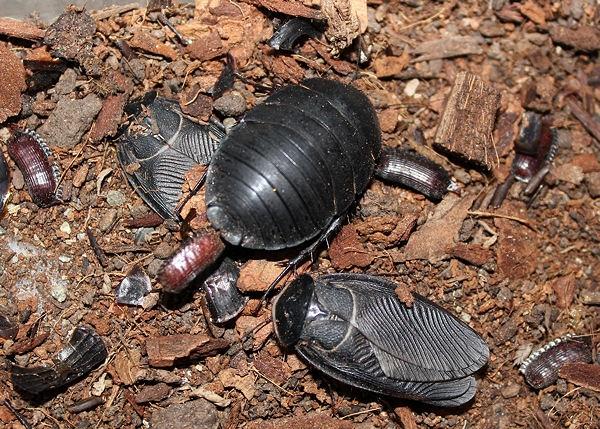

Egyptian cockroaches
In one province of this country, cockroaches are used as a waste recycling plant. Imagine: hordes of these insects quickly destroy all organic debris that flows to them through the pipes.Then fatty, well-fed arthropods themselves go to feed pigs and fish. They also serve as raw materials for the production of cosmetic and pharmaceutical products.
Every year, the mass of articles by Chinese scientists in scientific journals confirms the medicinal properties of cockroach products. For example, the funds prepared on their basis activate the process of regeneration of organs and tissues, give a rejuvenating effect, heal stomach ulcers and gastritis.
Chinese cuisine contains many cockroach recipes. Indeed, these insects have three times more protein than poultry meat.
What does a red cockroach eat?
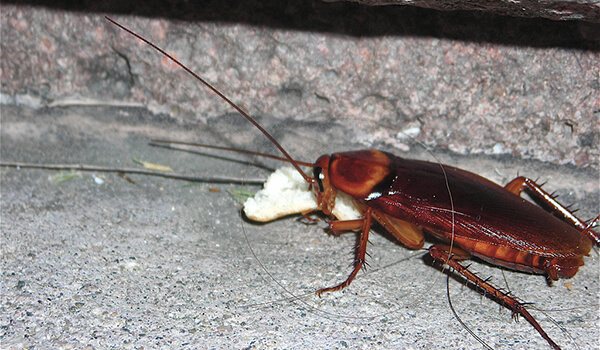

Photo: Big red cockroach
Red pests eat any inanimate matter containing organic matter. They even engage in cannibalism by eating dead fellows. Garbage dumps and other places where waste of human life accumulates, farms, greenhouses, canteens, hospitals, nature museums and herbariums, book depositories of libraries, archives and warehouses serve them as a table and a house.
They are especially attracted to:
- meat waste and carrion;
- starchy foods;
- everything that contains sugar;
- fatty food;
- paper, especially of old books;
- natural fabrics, especially dirty ones;
- leather;
- soap and toothpaste;
- natural glue, such as bone glue, which was previously used in the manufacture of books.
The ability of cockroaches to assimilate cellulose, like their closest relatives termites, is due to microorganisms that inhabit their intestines and, by digesting fiber, make it suitable for the host's body.
Interesting fact: While developing a universal poison for the Prussians, scientists found that they had brought out a race that does not eat sugar and everything that contains glucose. Experimental insects reacted to glucose as something unpleasant and bitter. Such a race is an evolutionary response to the poisoned sugar lures that have plagued all sweet lovers. Only those cockroaches who neglected such a treat survived and multiplied.
Insect control preparations
Perhaps it is difficult to find a person who does not know what an ordinary domestic cockroach looks like. Even if fate saved someone from a personal acquaintance with these insects, then, probably, everyone in childhood read the fairy tale "Cockroach" or watched a cartoon based on it.
So, what does an ordinary domestic cockroach look like and what is it? First of all, a cockroach is an insect belonging to the order of cockroaches. In addition to it, termites also belong to the same order, and in total there are more than 7570 species in it. Moreover, there are more than 4640 species of real cockroaches in it.
The world's largest cockroaches live in Colombia and reach 97 mm in length and 45 mm in width. These giants crawl faster than all insects - at a speed of over 4 km / h.
Three hundred million years ago, cockroaches already lived on our planet. They crawled among the giant horsetails and composts of the Carboniferous period, and now some of these incredibly ancient creatures live alongside people.
During the day they hide in cracks, and at night they crawl out after the livestock - bread crumbs, kitchen waste, not necessarily fresh. They can gnaw for lack of a better dry cloth, shoe cream, drink ink. In their intestines, as well as in their relatives - termites, protozoa live, helping them to digest this non-nutritious food.
Features of character and lifestyle
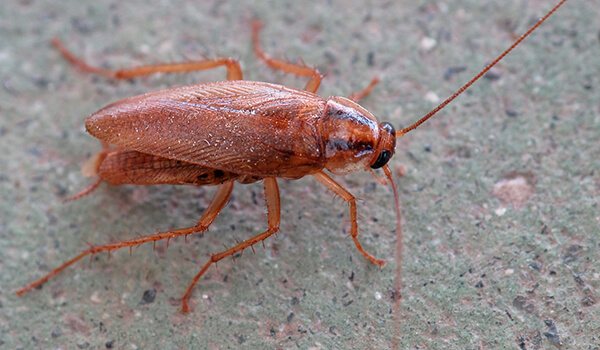

Photo: Red cockroach, also known as Prusak
The Prussians belong to the so-called "synanthropic organisms", which in life are closely related to human society and live practically only in the anthropogenic environment, the dwellings of people. Their resettlement to new territories also occurs with the help of humans - cockroaches travel with our things and food in the holds of ships, on trains, vehicles and airplanes.
Having settled in the house, adults and their growing nymphs go out at night to rob.Although in the dark they are attracted by light surfaces, but turning on the light causes an instant flight of the Prussians. This species itself does not make sounds, but the characteristic rustle of wings and legs, which the fleeing flock emits, is familiar to everyone who had the misfortune to live with them in the same apartment.
Cockroaches act very harmoniously, because certain relationships are established between members of the cockroach community that occupied one room. They use odorous substances - pheromones - to signal the presence of shelter, food or danger, to transmit sexual signals. These pheromones are excreted in the feces, and running insects leave here and there information paths along which their fellows gather for food, water, or find a mating partner.
Interesting fact: Scientists conducted an experiment to find out where pheromones are produced and contained, which collect cockroaches together. A group of Prusaks was poisoned by intestinal microorganisms and it turned out that their droppings ceased to attract other individuals. After feeding on bacteria isolated from the faeces of untreated cockroaches, their excretion regained its attractiveness. It turned out that these bacteria are responsible for the synthesis of 12 fatty acids, which evaporate in the air and serve as a signal for general collection.
A little exotic
As a rule, cockroaches in humans cause a feeling of disgust, as well as danger. Despite this, there are cockroach families, representatives of which are kept at home as pets. Some of the ornamental insects are very interesting in color. Chess cockroach - this is one of the pets, and it is called so because its coloring resembles a chessboard. Leads a nocturnal lifestyle. In the daytime, it hides in its shelter, and at night it actively moves around a person's dwelling.
Cockroach dead head


The cockroach "Dead Head" is no less popular among exotic lovers. He was named so because he has a very interesting pattern on his back, reminiscent of a terrible mask. This insect is capable of long flights.
Madagascar cockroach
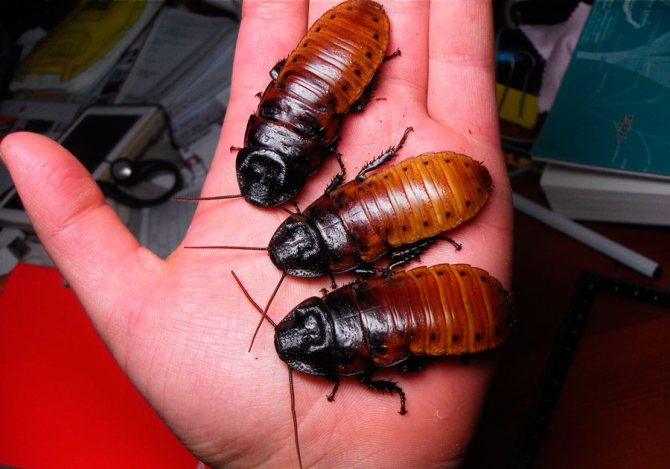

The Madagascar cockroach is an amazing insect that can grow up to 10 cm in length. In addition, this is the only species of cockroach that can make sounds in the form of a loud hiss. At the same time, experts say that this insect breathes like that, making sounds.
Cockroach rhino
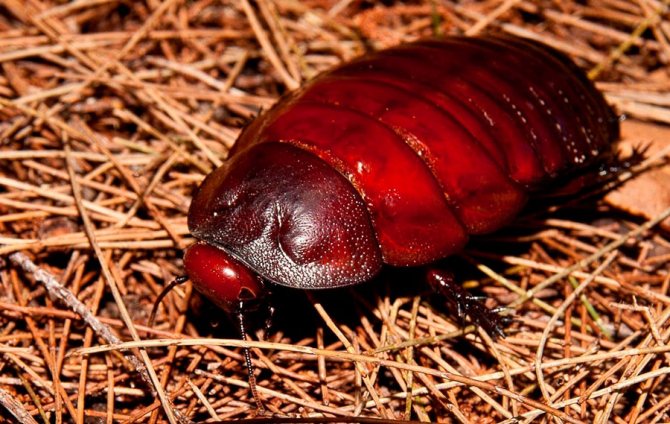

The rhinoceros cockroach is another unique representative of this numerous genus of insects. Their uniqueness lies in the fact that they weigh up to 40 grams, and besides that, they are able to live at least 10 years.
Social structure and reproduction
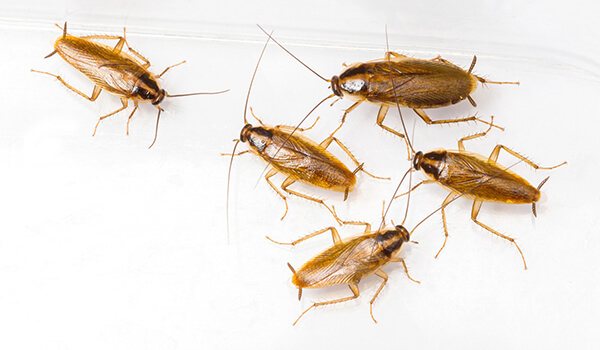

Photo: Small red cockroaches
Prusaks are sociable and, when living together, create a real democratic society of equals, who are united not only by common housing and growing nymphs, but also by common interests. The main one is food, and cockroaches master the found edible amicably, ingenuously informing their fellows about its location and even the number with the help of pheromones. The more cockroach tracks lead to a food source, the more attractive it is to others. They are also free to choose a sexual partner.
Cockroaches breed very actively. During her life, the female lays from 4 to 9 packages (ooteca) up to 8 mm long, each of which contains 30 - 48 eggs. The formation of the capsule and the maturation of eggs in it takes on average 28 days, and almost all this time the female wears it at the end of the abdomen. Although, in the end, it can drop the load in a dark nook.
After a few weeks, she begins to develop a new edema. In total, each female produces up to 500 heirs. Reproduction in a flock occurs continuously and all generations and stages of development can be present in it at the same time.In a good place, the cockroach population grows like a snowball or, in the language of mathematics, exponentially. Growth can only be slowed down by indoor cooling or sanitization.
Interesting fact: Nadezhda cockroach became the first animal to conceive in space. It happened on September 14 - 26, 2007 on the unmanned biosatellite Foton-M 3. Cockroaches were traveling in a container, and the fact of conception was recorded on video. Returning from the flight, Nadezhda gave birth to 33 cubs. The only unusual thing about them was that they grew faster than their earthly peers and earlier acquired a dark color. Nadezhda's grandchildren did not show any peculiarities.
But what about the brain?
The digestive system still plays an important role, since the cockroach still absorbs food through the mouth. But even without a head, he can live for ten days, if before that he had a hearty lunch. Much more likely to be killed by mold or other insects than hunger.
Many may ask: "What about the brain?", And they will still be mistaken. The brain in the usual sense of the cockroach is not one. In each part of his body there are nerve nodes, which are responsible for body movements and other sensations. Loss of a head is simply the loss of one of the departments, nothing more. But, despite such skills, the head is still not as tenacious as the body. Therefore, it will "live" much less.
As you can see, most of the legends have nevertheless been confirmed, therefore, in order to prevent the appearance of these parasites in your home, you need to carefully monitor the water in the house first of all. Cockroaches without food and a head will still live quite a long time, but without water they cannot, therefore, they are attracted to wet places.
Natural enemies of the red cockroach
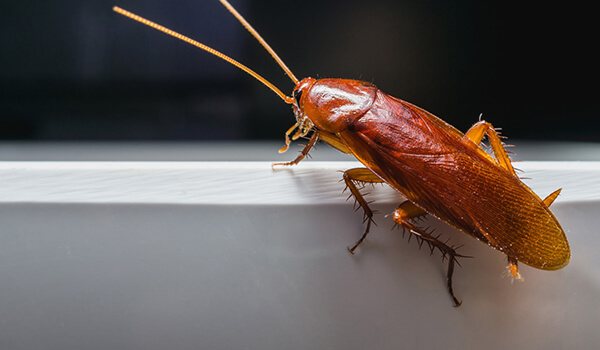

Photo: What a red cockroach looks like
The cockroach is not poisonous and, in principle, can be eaten by any animal that does not disdain insects. But human habitation provides him with a reliable shelter from birds and other free-living predators. Here he can only be threatened by other synanthropic couch potatoes and slaves.
Namely:
- spiders;
- centipedes;
- indoor birds;
- cats and dogs can catch them for fun.
The main enemy of the red-haired Prusak is anyone under whose roof this malevolent creature falls. Any "green" will agree with the fact that the insect causes considerable harm. It is enough for him to see his kitchen table after their visit.
Why Prusak is harmful:
- carries more than 40 pathogens of microbial and viral infections (including dysentery), which is especially important in hospitals;
- intermediate host of three types of helminths and protozoa;
- causes and provokes allergies, worsens asthma;
- creates an indoor stench thanks to pheromones;
- spoils food products;
- fouls things;
- affects the psyche and may even bite.
Pest control measures have been improved for centuries. Isolating food waste and water, setting traps from which they cannot get out, freezing rooms, and finally, chemical warfare - all methods have been tried. Mechanical methods are not very effective, and chemical methods only lead to further improvement of the pest. Modern Prussians are not sensitive to pyrethroids, the classic insecticides, and are weakly susceptible to other old classes of pesticides. Modern drugs (hydroprene, methoprene) act as growth regulators and are more effective. They delay molting and prevent insect development.
Interesting fact: Previously, in houses, especially in rural ones, titmouses and blue tit were bred, especially to fight cockroaches. The birds hibernated in the warmth, cleaned the house from pests, and in the spring, according to tradition, on Easter, they were released.
Harm to humans
With a large and long-term accumulation, insects spoil things, the appearance of finishing materials and household items is lost. Cockroaches can disable radio equipment by short-circuiting it.
Attention! The Prussians carry the eggs of worms (broad tapeworm, pinworms, whipworms), causative agents of dysentery, salmonellosis and other infectious diseases. Cockroach excrement is toxic and often causes allergic reactions, up to asthma. The same can be said for their saliva.
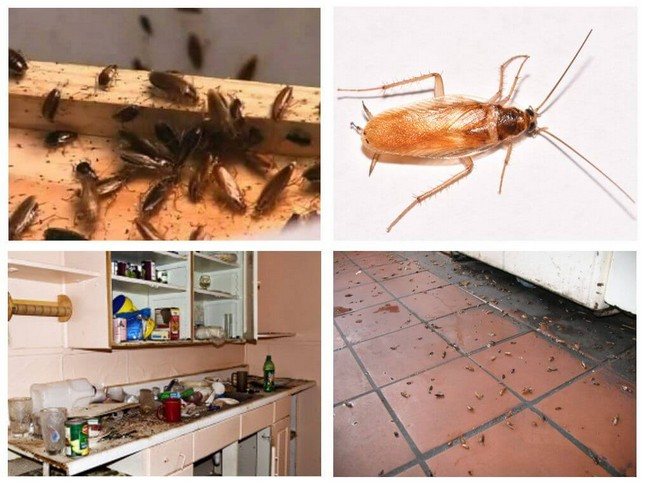

Climbing sleeping people, cockroaches gnaw the edges of the lips and other delicate areas of the skin, which can become infected and take a long time to heal. Sometimes they climb into the ears and cannot get out of there.
The chitinous shell of the Prusak is capable of retaining a great variety of microbes, since it is abundantly supplied with hairs, hooks and processes. Moving through trash bins, animal corpses, their feces, beds and feeding areas, the cockroach clings to pathogenic microorganisms, helminth eggs and brings them to the table for a person.
Dangerous bacteria and eggs of internal parasites can enter our stomach not only from plates and food that a cockroach walked over, but also from furniture, walls and other household surfaces.
For what reasons do they appear in a particular living space?
There are several reasons:
- unsanitary conditions. Always dirty floor, unwashed dishes, cluttered corners, scraps of food lying in different places (this can be spilled sugar or flour);
- things from travel. An insect can arrive at your house in a travel bag, having got into it from a hotel or a train car;
- dysfunctional neighbors. It doesn't matter which side of the slob you are on (top, bottom, through the wall). Cockroaches will surely penetrate from them into your apartment from the ventilation hole or cracks in the walls and floor;
- faulty water and sewer pipes. Small humid places under a drip and warmth - this is a real cockroach paradise. As long as there is moisture nearby and the temperature in the apartment does not drop below 10 degrees, the Prussians will be ready to live with you forever.
We offer you to familiarize yourself with Worms in human kidneys, symptoms of worms in them

